A Flemish treat in Belgium
The charismatic city of Ghent is perfect for a European mini break. The meandering waterways and ancient cobbled streets lead you on a voyage to discover Ghent’s culture, counts and chocolate; what more could you want?
Ghent’s aim to lower its environmental impact on the world can be seen throughout this picturesque city centre. It has the largest low-traffic pedestrian zone in Europe, and it’s clear to see the benefits to locals and tourists alike.
The ease of strolling around and exploring the historical heart of Ghent at a relaxed pace was one of the things we loved. Just slip on a pair of comfy shoes and venture off to discover Ghent’s magnificent sites; oh yes, keep an eye out for the cyclists.
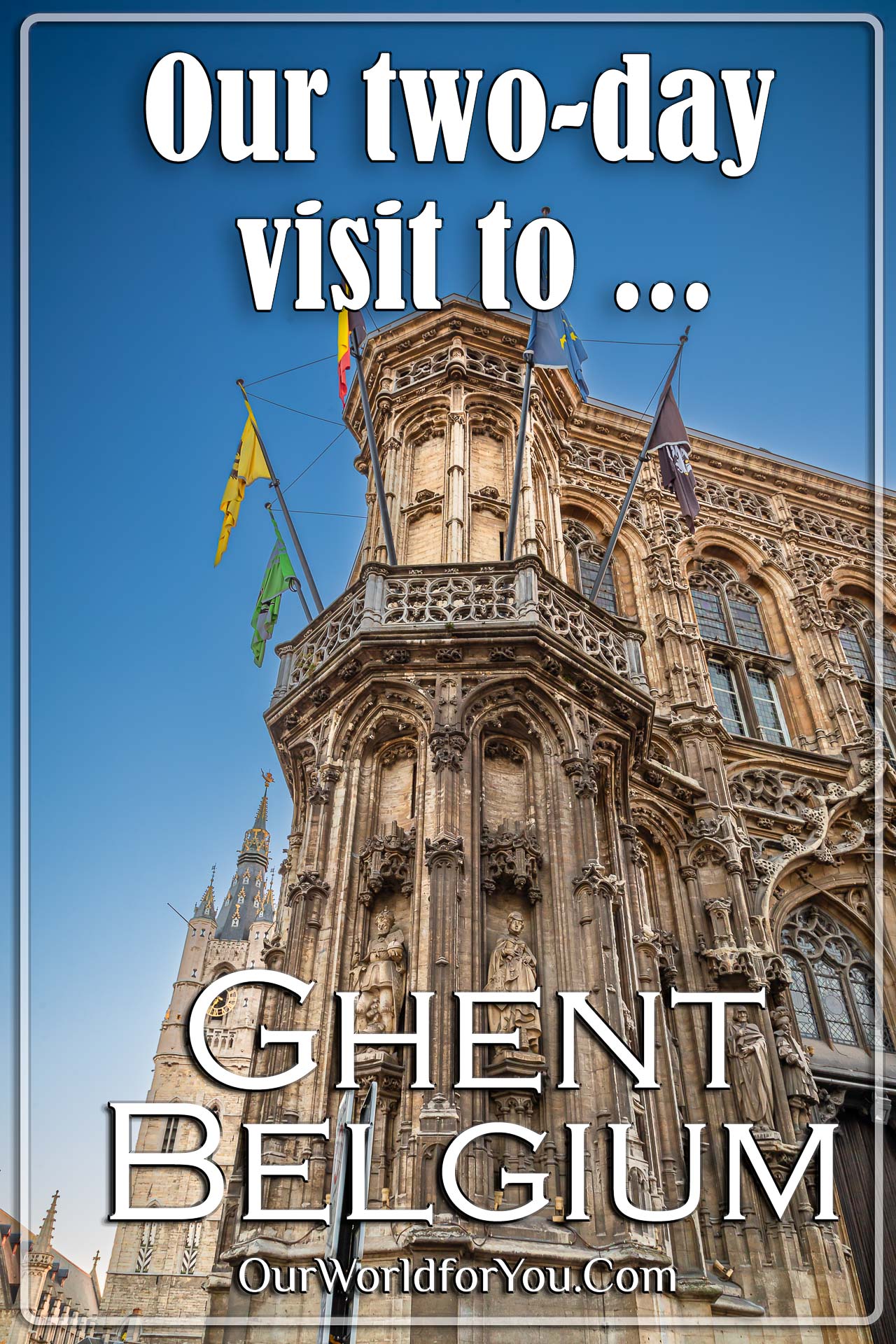
Where is Ghent?
How to get to Ghent
- By Train
Start creating your own Ghent adventure by train and discover the cultural delights of this picturesque city at a relaxed pace. Explore the sites amongst the charming city streets.
In just under 3 hours from the UK, you can hop on the Eurostar to Brussels, change onto a Belgium National Rail train to Gent-Sint-Pieters, and your Flemish fun begins.
- By Car
If you’re venturing from the UK, jump on Le Shuttle and tour Belgium under your own steam.
Alternatively, it’s so easy to visit Flanders on a road trip. Rental Cars search multiple well-known car hire brands and find the best deals that suit you.
A brief history of Ghent
A gem in the heart of FlandersThe vibrant city of Ghent has centuries of history flowing through its historic lanes and waterways. During the medieval period of around the year 1000 and then up until 1550, Ghent played a significant role in Europe. Ghent was the second largest city in Europe after Paris.
It’s hard to believe that during the 11th century, large ships docked along the banks of Graslei and Korenlei. However, the striking merchant buildings with their intricate façades create an amazing vision of how the bustling docks would have appeared.
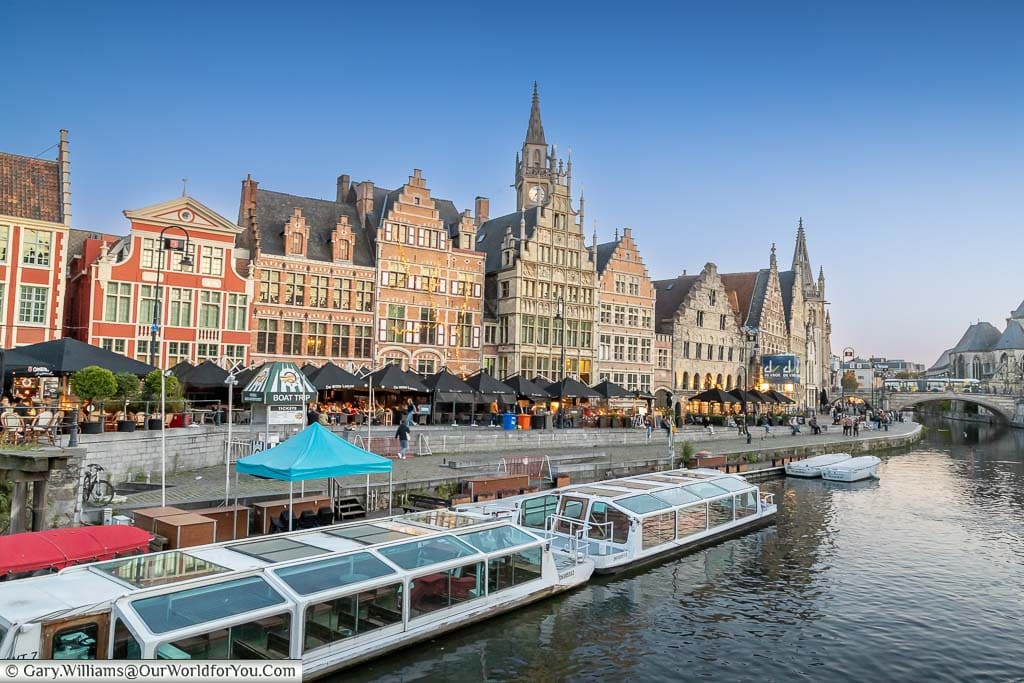
Ghent cultivated a prominent cloth industry for itself and became a leading city for its production in Europe during the Middle Ages. Significant ties were then made with England as their wool was of the highest quality.
Ghent broke its relations with England to appease the King of France and welcomed the Council of Flanders to Ghent from Bruges; they continued to reside in the Castle of the Counts until 1353.
Centuries passed, and Ghent, along with many neighbouring cities, continued to be governed under different European rulers; it wasn’t until October 1830 that Belgium declared independence from the Netherlands.
Exploring the city of Ghent
The ‘CityCard Gent’ is a must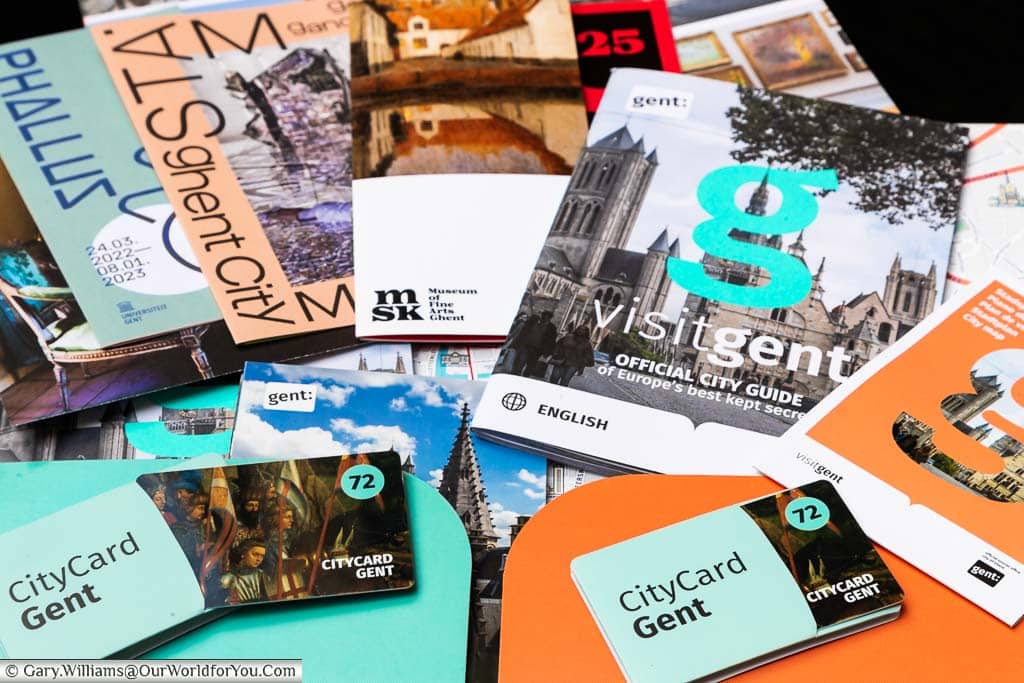
If there was one significant piece of advice we’d like to share while visiting Ghent, it is to buy a ‘CityCard Gent’. You’ll be hopping from one attraction to another throughout your visit. The CityCard Gent is €42 for 48hrs and €48 for 72hrs. This allows free access and discounts to many of Ghent’s attractions and free travel on trams and buses in the historic city centre. If you’re feeling energetic, you can even rent a bicycle free for a day.
The CityCard Gent ensured that visiting the local attractions and jumping on and off the trams was effortless.
Visiting the Castle of the Counts
Ensure you experience the audio tourSo, armed with our Ghent city cards, we were off to explore the beautiful, moated ‘Castle of the Counts’.
The Castle of the Counts has had quite a turbulent past; however, it’s lived to tell many tales and is now the only remaining medieval moated castle in Flanders with its defences intact.
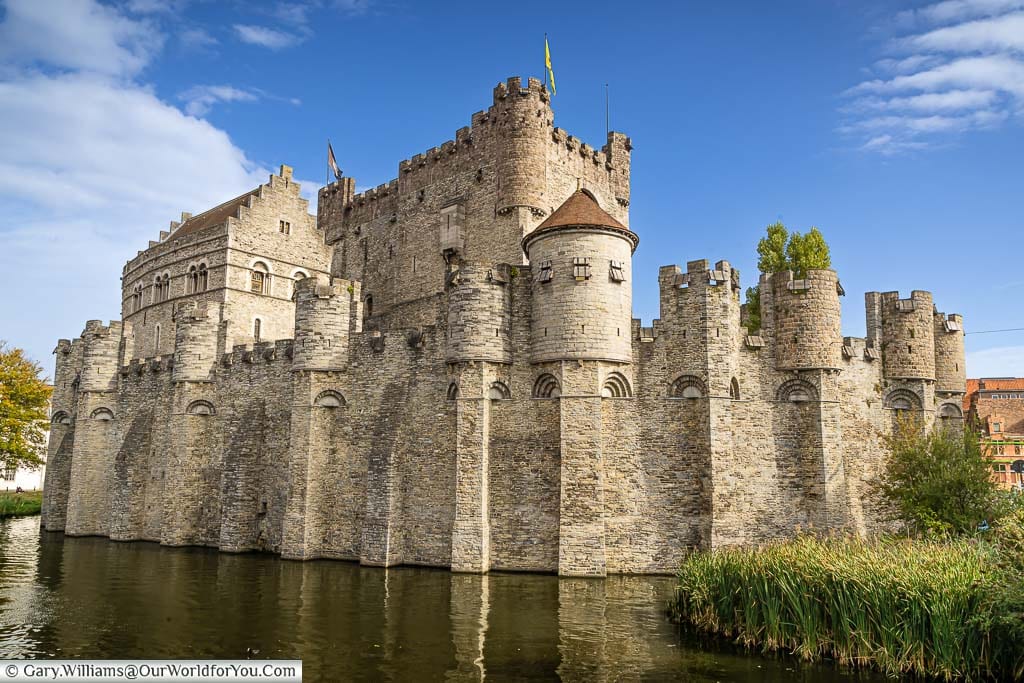
Visiting the Castle of the Counts or Gravensteen is not to be missed off your Ghent itinerary; it is an absolute must if you enjoy digging deeper into history. Additionally, please do not pass up the opportunity of the audio tour, it’s included in your ticket price and your CityCard Gent, and it is hysterical. It is voiced by the Flemish comedian Wouter Deprez, and I’ve never known an audio guide to be so entertaining.
The Castle of the Counts can trace its history back to the time of the Romans when there was a settlement of the banks on the River Lys. Fast forward to the Middle Ages, the Counts of Flanders were moving in, and the wooden fortress was rebuilt entirely of stone, which you see today, complete with 24 eye-catching towers.
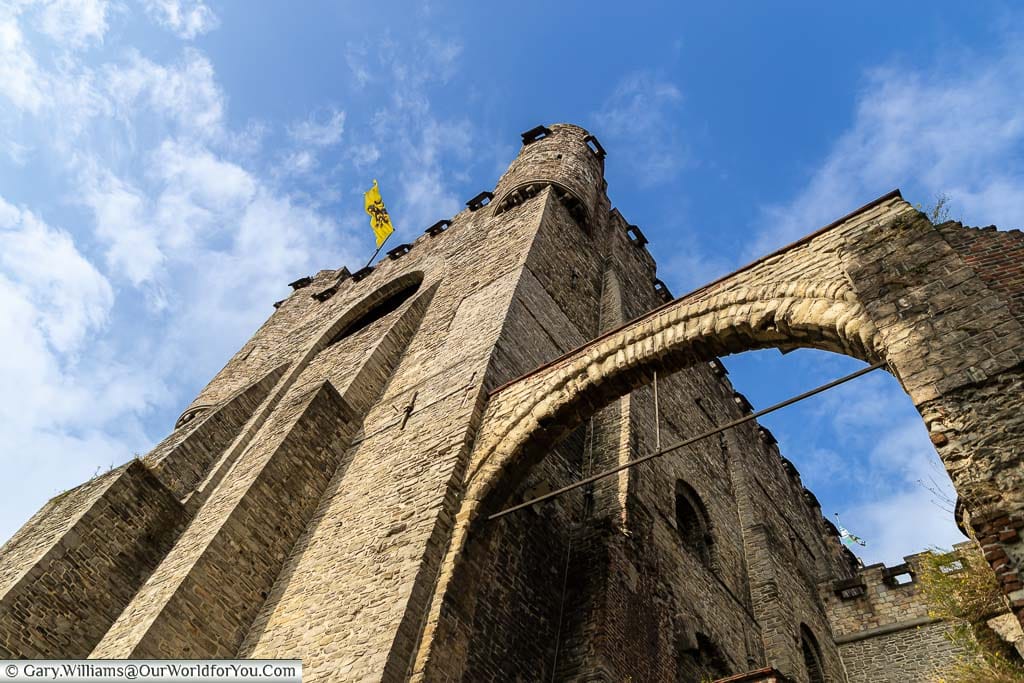
Tourist Information
St Bavo’s Cathedral
AR tour of the Ghent AltarpieceOur next stop on our exploration of Ghent was St Bavo’s Cathedral. We were embarking on the AR tour of Ghent’s famous Altarpiece, ‘The Adoration of the Mystic Lamb’ by Jan and Hubert Van Eyck. This world-famous masterpiece was painted in Ghent in 1432 and has had a very turbulent past.
You'll understand part of this artwork's journey if you’ve seen the movie Monuments Men starring George Clooney.
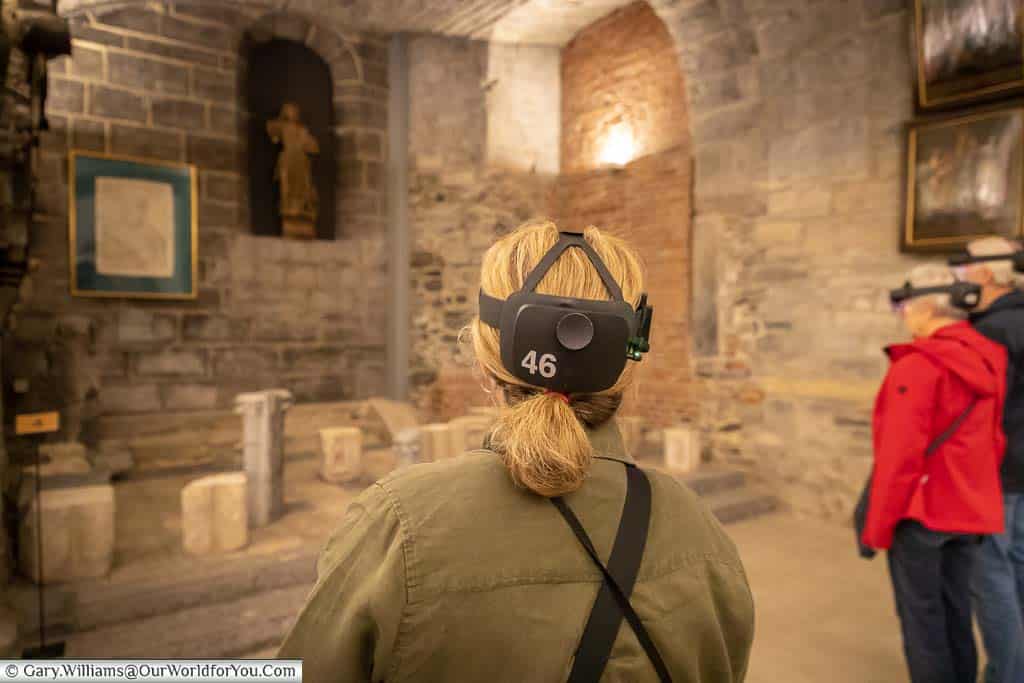
The AR tour of the Ghent Altarpiece was one of the highlights of our trip, and we can highly recommend it. Don’t forget to use your CityCard Gent to obtain a €10 discount and book your timeslot online. The AR (augmented reality) tour of the Ghent Altarpiece is quite popular.
We headed straight to our tour and explored the cathedral after. I had never done an AR Tour before so; I wasn’t sure what to expect. We were fitted with the headset, and we were off, don’t worry; if you wear glasses, you can keep these on.
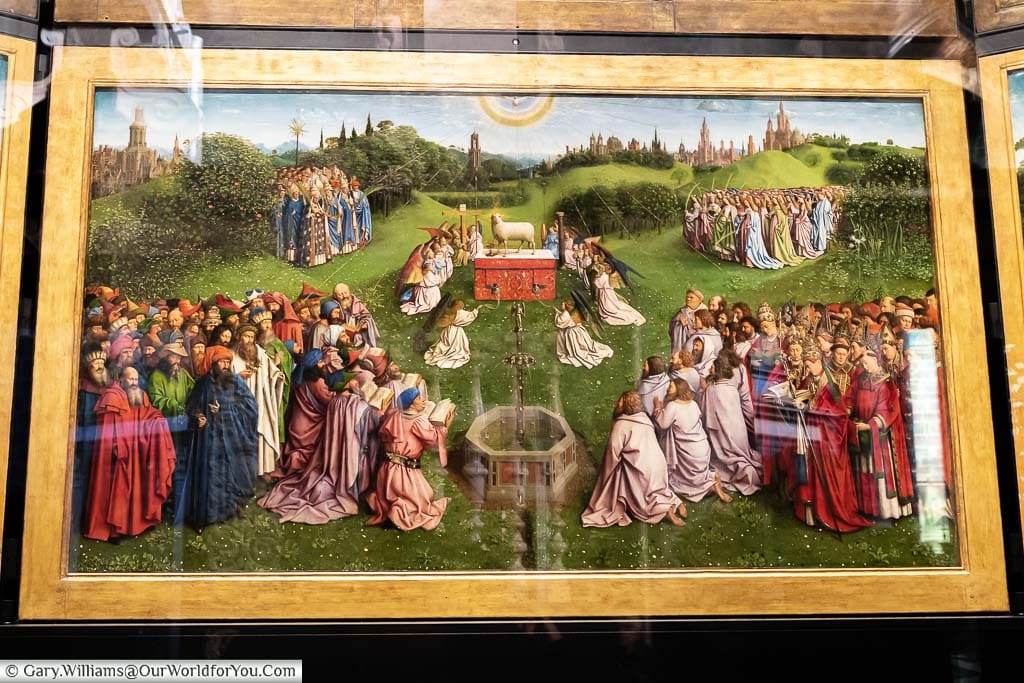
The AR tour is incredible, and you really become absorbed in the whole experience. As the history of the cathedral unfolds, the city of Ghent comes alive before your eyes. Weirdly you can wander around the vision in front of you and see the image from different angles.
You are effortlessly guided around and the story of the creation of ‘The Adoration of the Mystic Lamb’ is narrated to you in captivating detail. Each one of the 18 beautiful panels and the scenes they depict from the bible are explained.
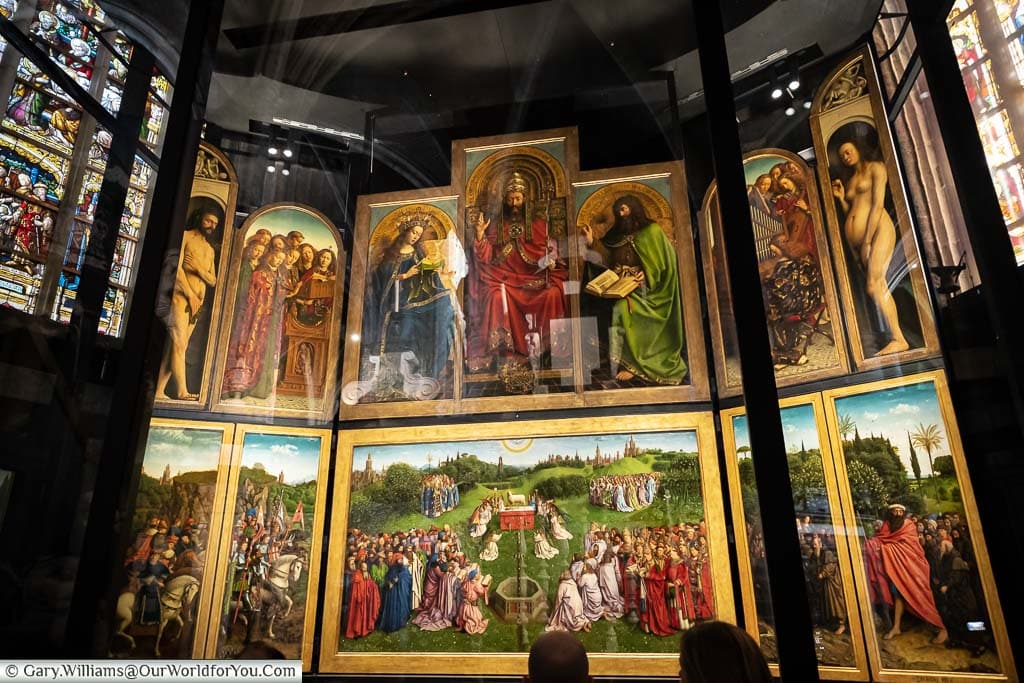
Discovering Ghent from the water
Guided boat tour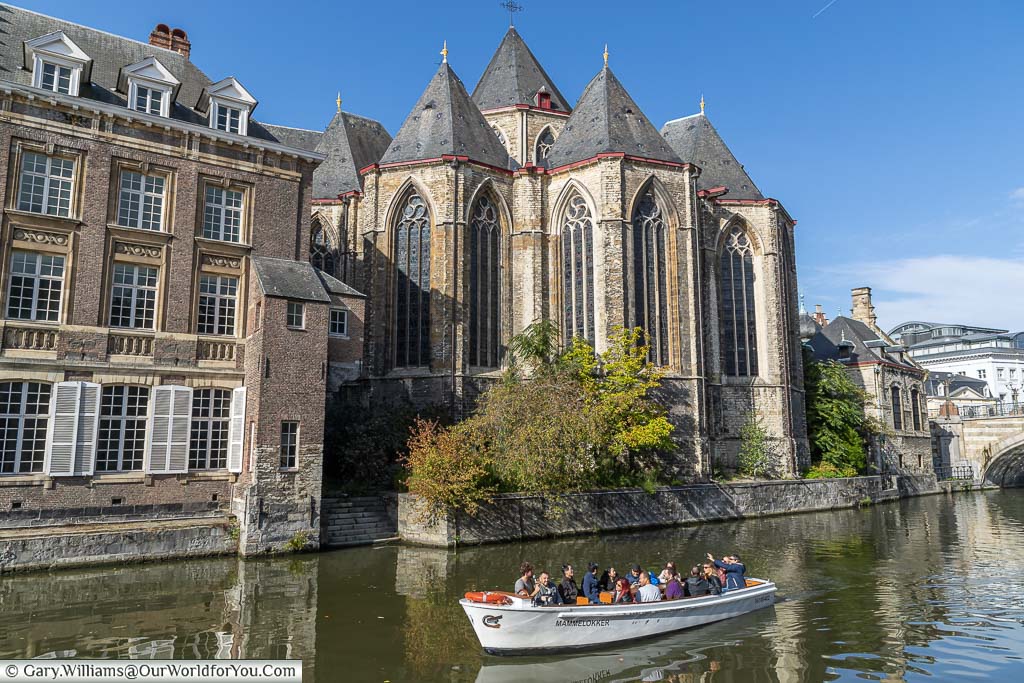
The tour guides aboard the boats are so informative and share snippets of information about the architecture adjoining the river Leie and the Lieve canal. They point out tiny hidden details along the way that you would otherwise miss and can revisit after your tour.
As you meander through the waterways, you pass by the Castle of the Counts, Ghent’s old Fish Market and Meat Hall. And, of course, you see the magnificent buildings along Graslei and Korenlei and then venture on as far as the Rabot Towers.
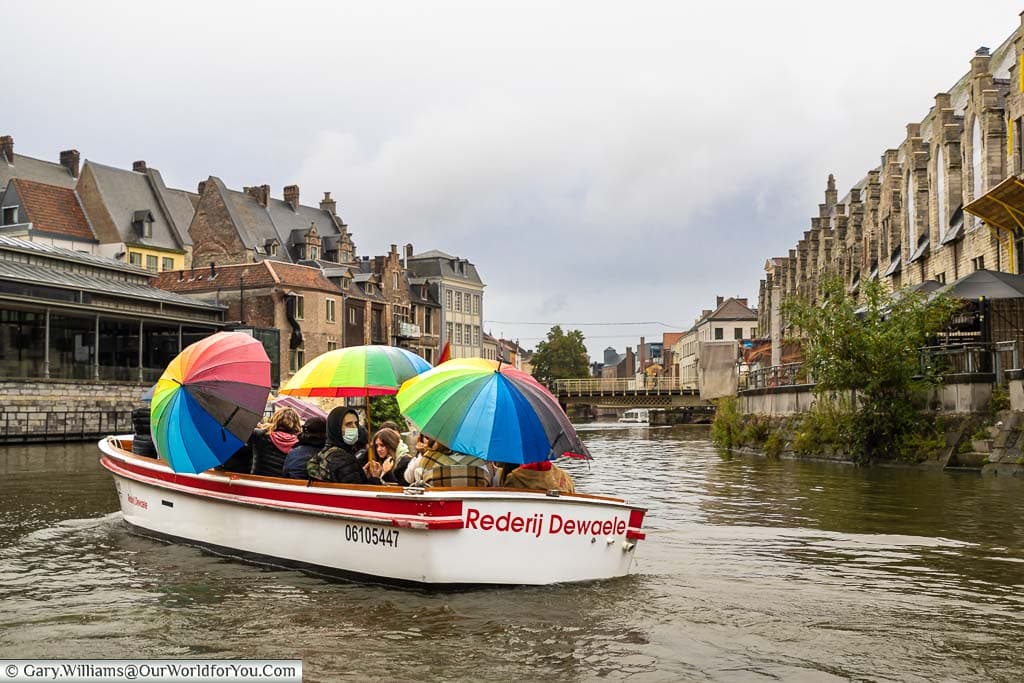
If you’re heading off on a Belgium adventure, then grab a copy of this DK Eyewitness book. I love planning road trips and these guides are so helpful.
I find them extremely informative, easy to follow and the pictures and maps tempt you into discovering more of the back roads.
Visiting the Museum of Fine Arts in Ghent
MSK is celebrating its 225th anniversaryThe Museum of Fine Arts in Ghent, also known as MSK, will be celebrating its 225th anniversary in 2023, making it the oldest museum in Belgium.
The captivating MSK museum is located in Citadel Park, just south of the city of Ghent and accessible by jumping on Tram 1 from Korenmarkt. Not only is the entrance to the Museum of Fine Arts free with your Gent CityCard, but your tram journey is also included on your card.
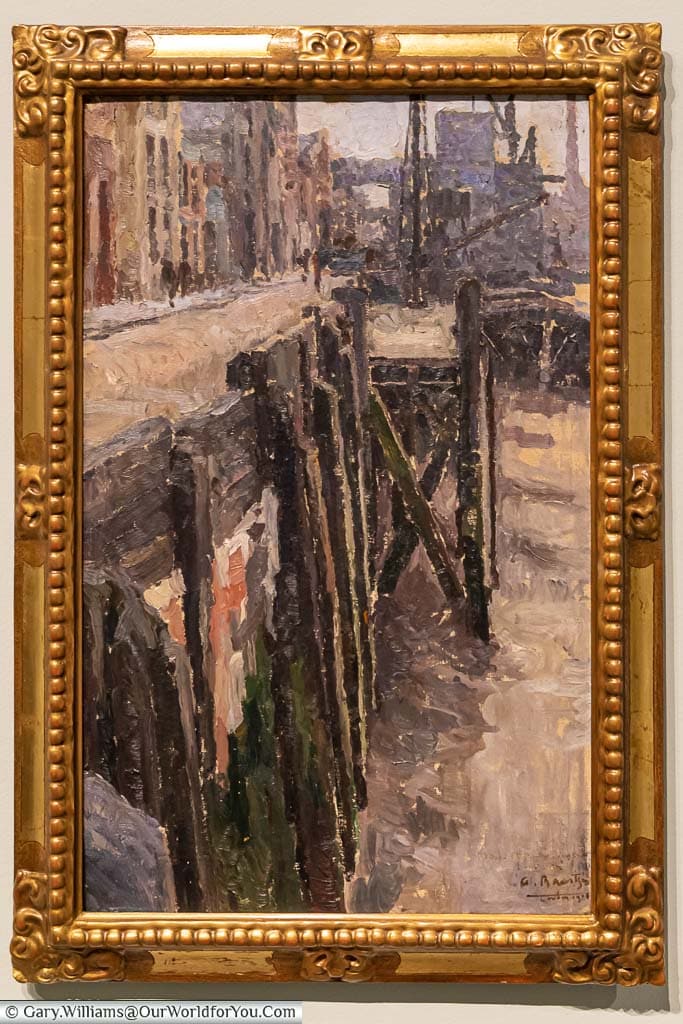
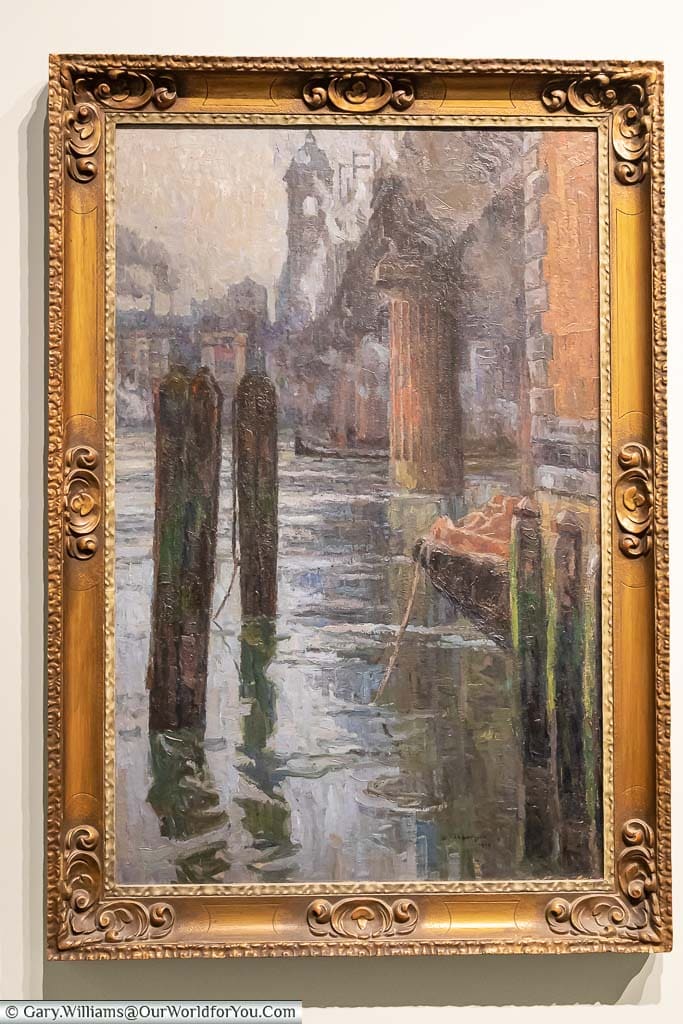
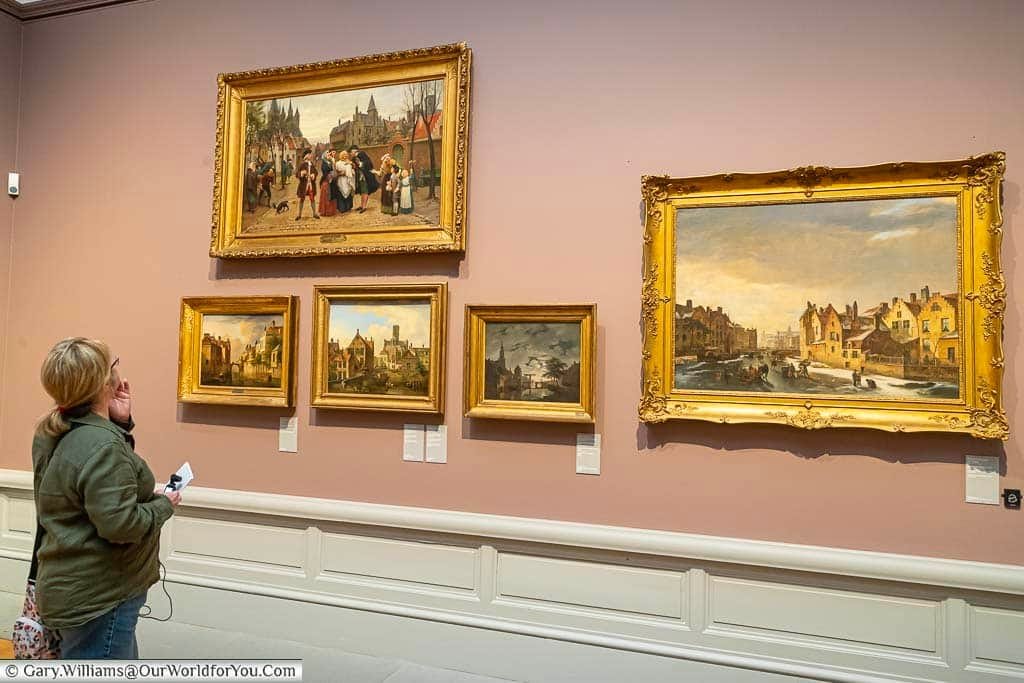
Exploring Ghent City Museum
A journey through time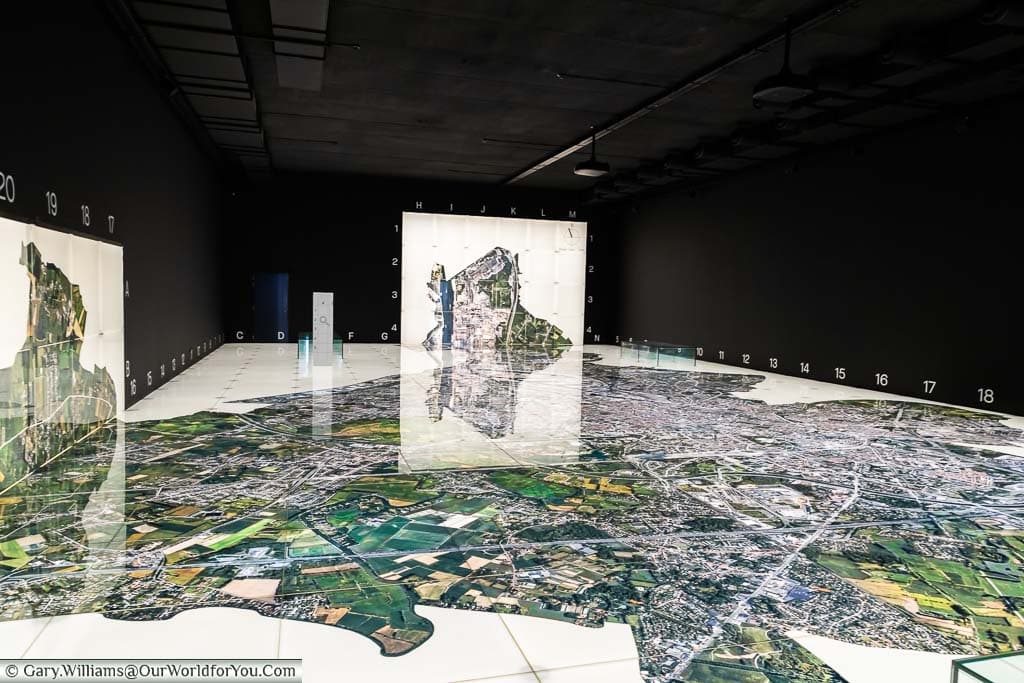
The Ghent City Museum takes you on a journey through the Medieval city’s history from the Middle Ages to the present day. What you’ll instantly find on the first floor of the museum is a vast aerial photograph of Ghent measuring 300sq. metres. Take a wander across the new map to see if you can point out the sites you’ve explored on your visit to Ghent.
All through the museum, you’ll discover fascinating facts about the charming city of Ghent from its ancient past, through its cloth-making years and its intertwining stories with its neighbouring lands.
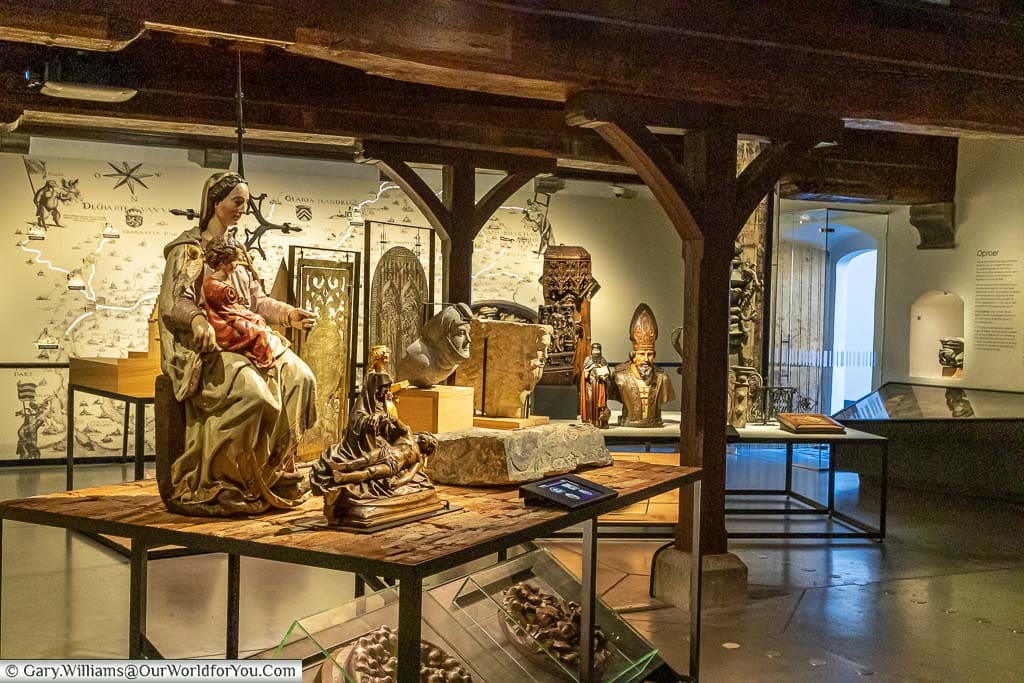
Discovering the streets of Ghent
From street art to BeguinesOne of our great pleasures when visiting a town or city is discovering its historic streets on foot, and Ghent is no exception. Ghent is picturesque, eclectic, charismatic and incredibly welcoming and friendly.
The first area we were drawn to was all along Ghent’s waterways, the River Leie and the Lieve canal; if there’s water to be found, I’m there. There are some stunning pieces of architecture throughout Ghent, especially along Graslei and Korenlei, where the historic quay is located. Many striking buildings that line the river date from the Middle Ages, although their beautiful façades were modified and restored during the 18th and 19th centuries.
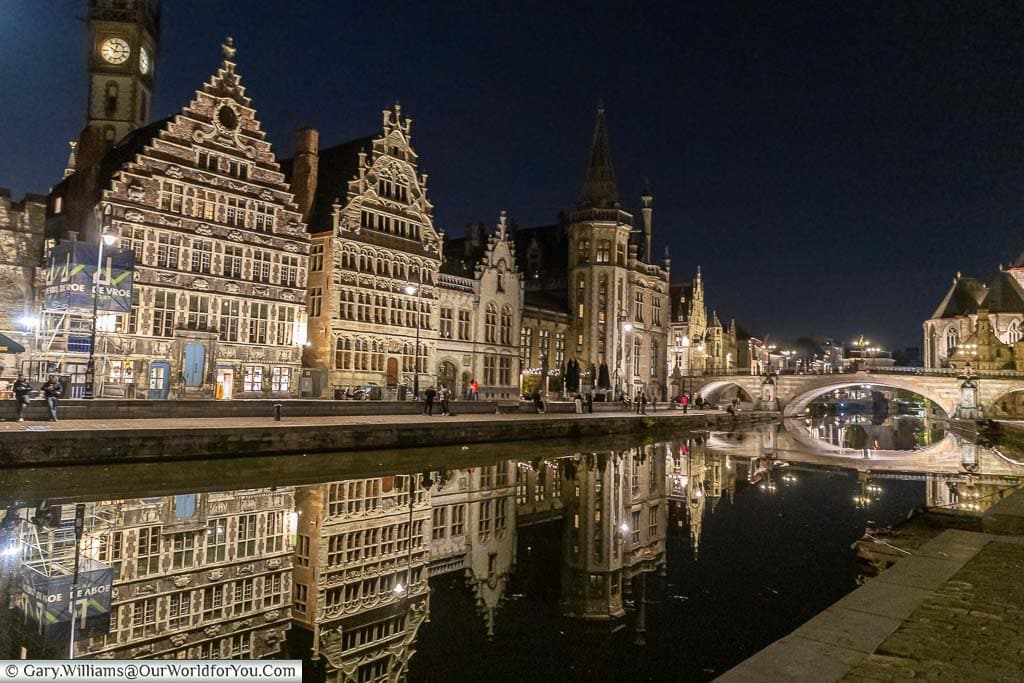
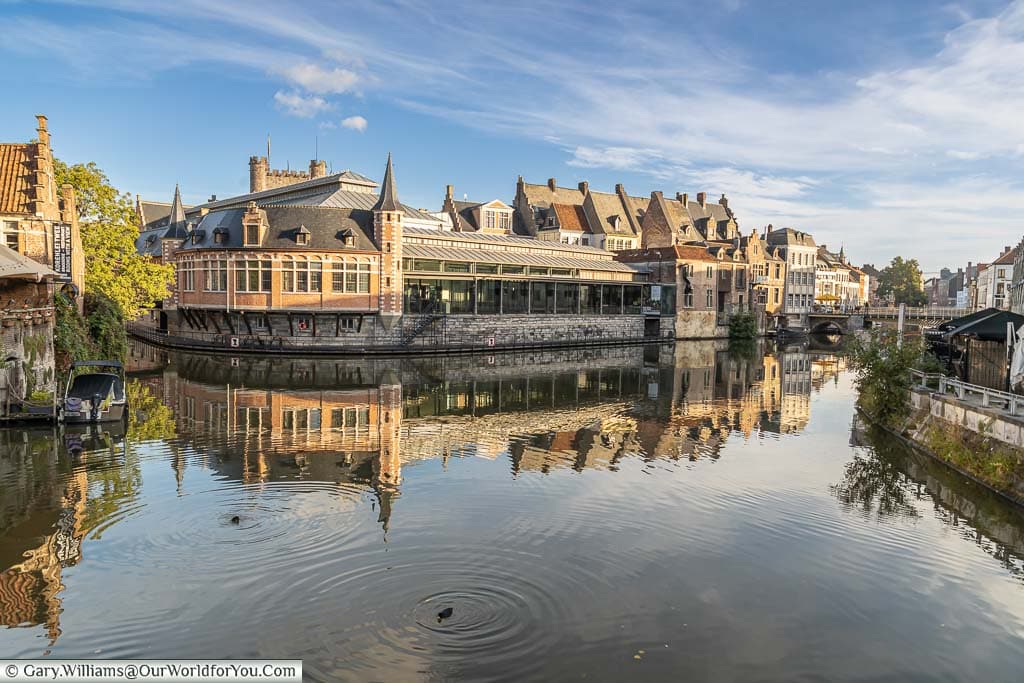
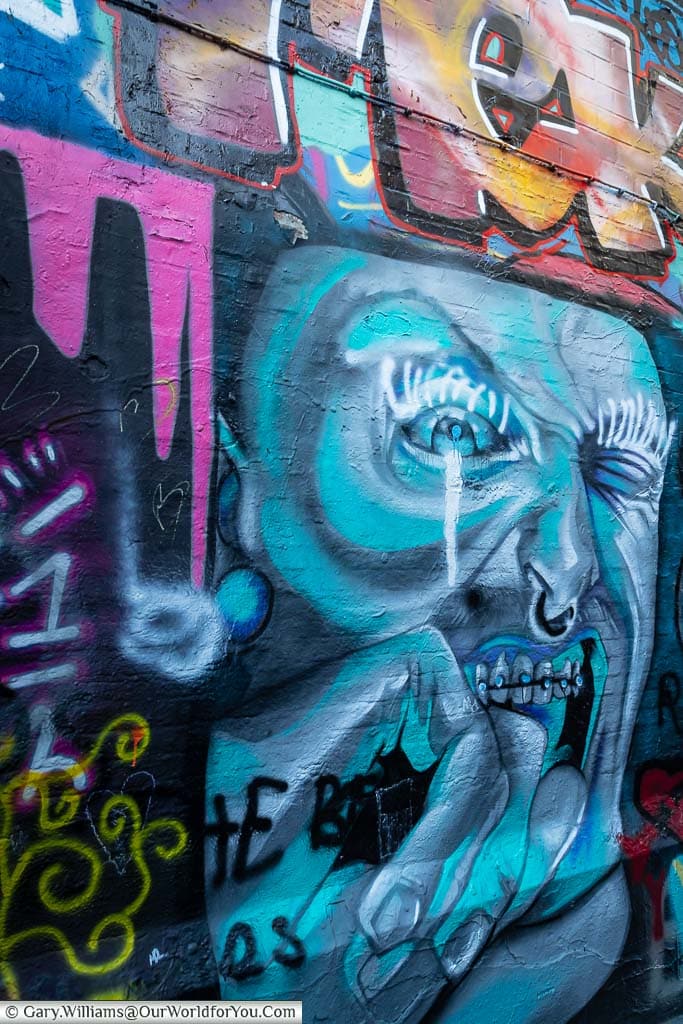
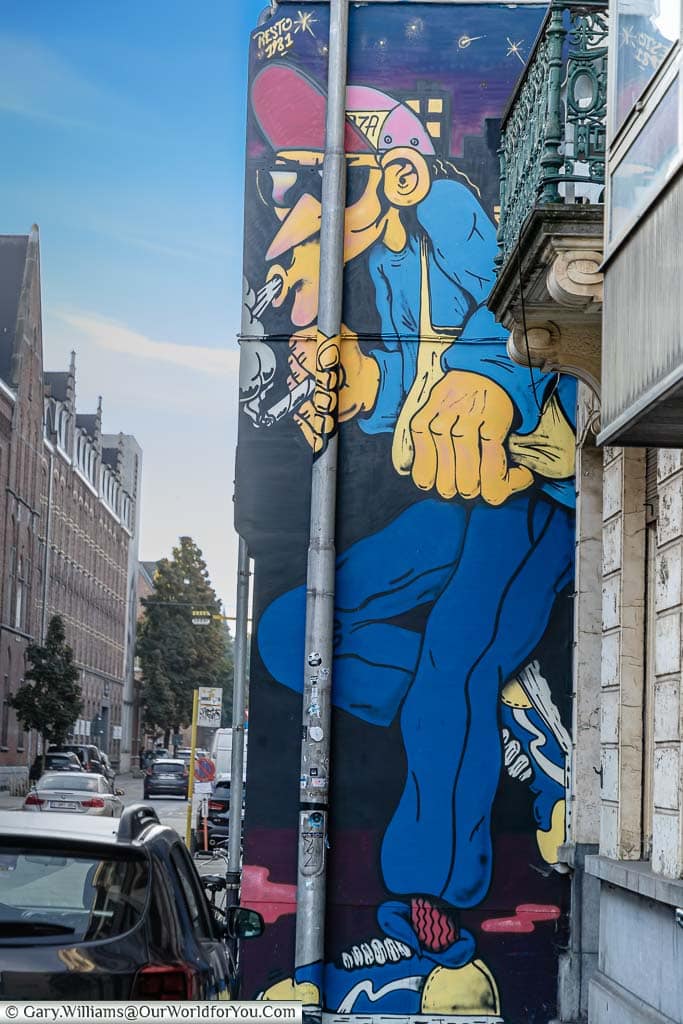
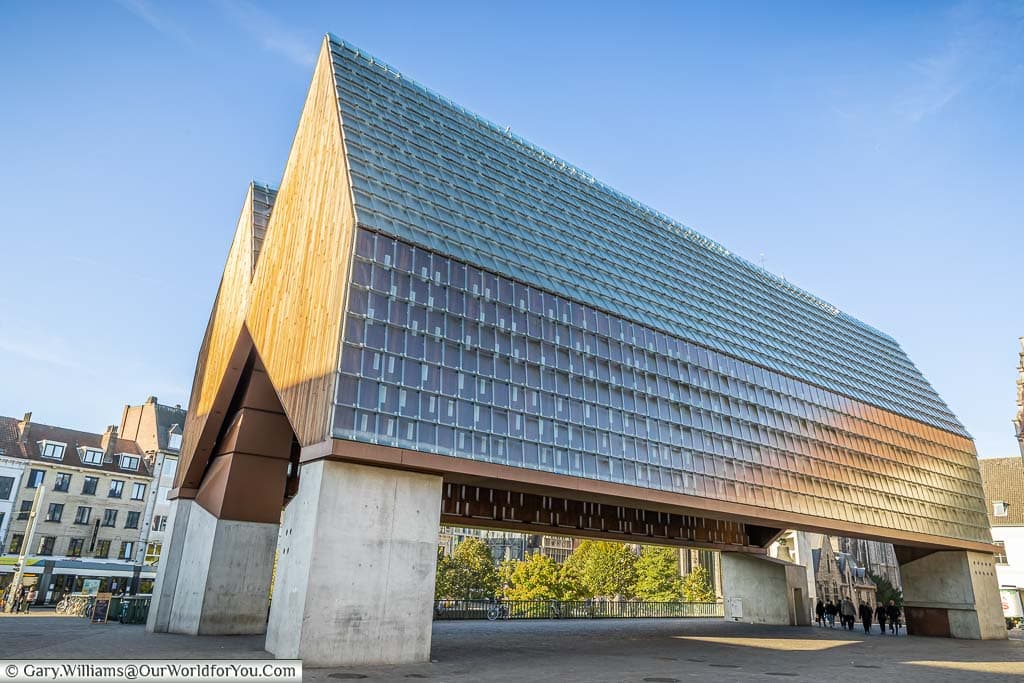
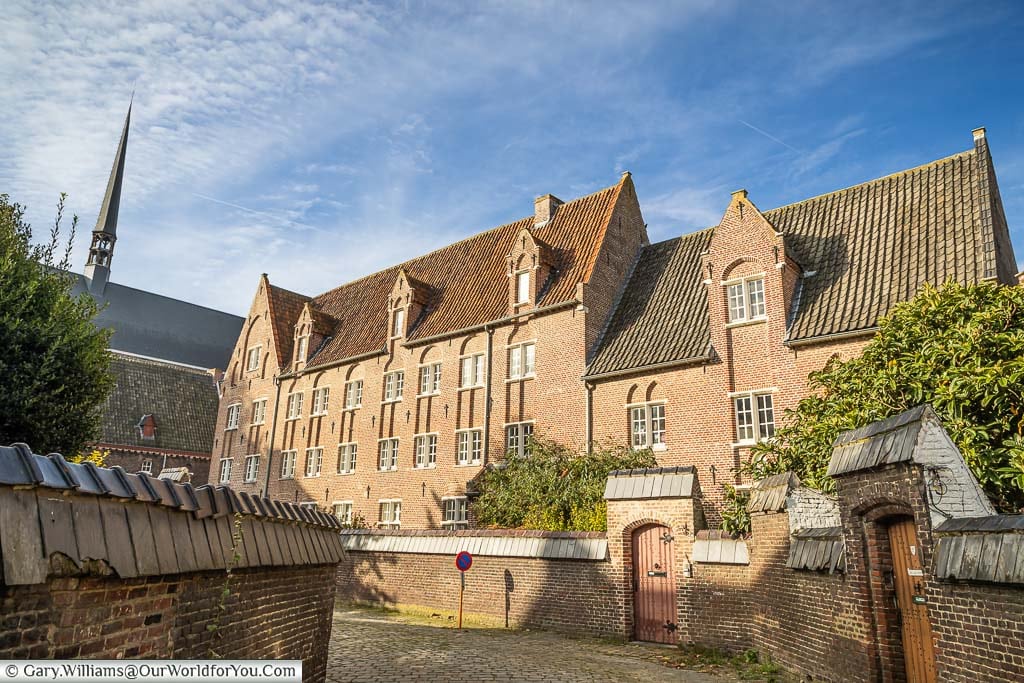
Our video of Ghent
We have created a little YouTube video of Ghent. Why not take a look?
Also, why not subscribe to our YouTube channel and get the latest clips as we post them?
Where we ate in Ghent
Serving local Belgium fareOn our first night in Ghent, we were hosted by the restaurant Pycke Zot which was slightly out of the city centre but only a 10-minute tram (no. 4) ride.
Pycke Zot was a lovely restaurant; the atmosphere was relaxed and friendly, and the staff were very accommodating. They helped us with the Dutch translation as they didn’t have an English menu. I quite liked the fact it was in Dutch; that’s what travelling is all about, go with the flow.
The local dishes were regularly changing on the menu, and the options we chose were incredibly delicious and fresh.
I went for the Belgian dish, a Vol-au-vent; the hollow puff pastry case was filled with chicken, mushrooms, and small meatballs cooked in a lovely white sauce. The dish also came with a crunchy apple salad and croquettes.
Gary chose a regional beef stew braised and cooked in Chimay beer. This was accompanied by a generous portion of applesauce, fries, and a salad. Which was also delicious; both dishes were very filling.
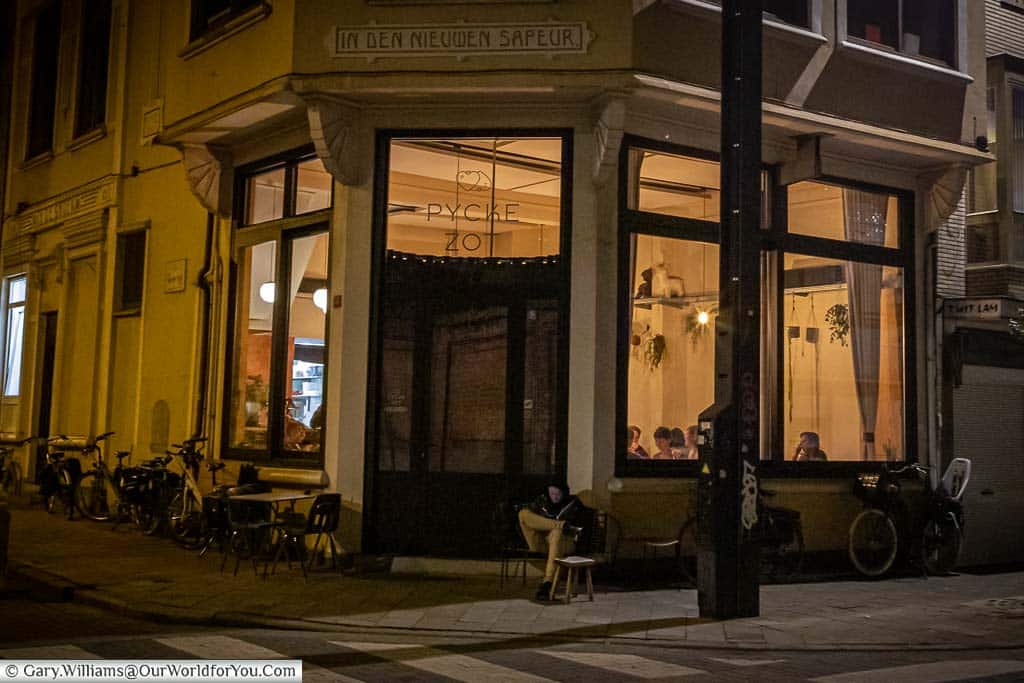
For our second night in Ghent, we were hosted by the restaurant Brasserie Pakhuis, which was in the heart of the historic city centre.
Brasserie Pakhuis was a large bustling restaurant set in a former warehouse near the Korenmarkt and had a welcoming, relaxed atmosphere.
The menu was in Dutch and English and had a varied selection of fish, vegetarian and meat dishes.
I chose the steak “Limousin” à la plancha, with a mixed salad and fries, accompanied by red wine and shallot sauce. It was a lovely dish and not too filling, so I indulged in a dessert and had Belgian chocolate moelleux with caramel ice cream, which was yummy.
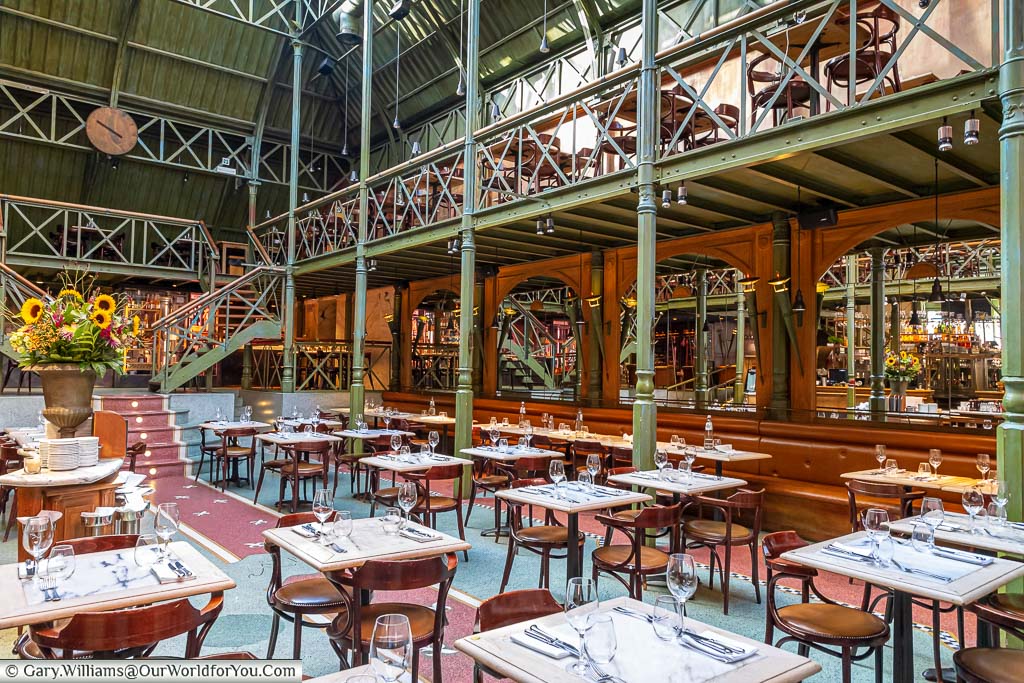
Low Emission Zone (LEZ) in Ghent
Ghent is committed to being an environmentally friendly city. Therefore, if you are driving your own vehicle to Ghent and it is not registered in Belgium or the Netherlands, then you will need to register it. Use the LEZ Gent website for peace of mind.
It is simple to do and free of charge; it is IMPORTANT to do this; otherwise, you will incur a fine. All the required details for UK drivers should be on your DVLA logbook/V5C document.
Where we stayed in Ghent
The peaceful Monasterium PoortackereDuring our stay in Ghent, we were hosted by Monasterium Poortackere.
Monasterium Poortackere is located along ‘Oude Houtlei’ and was incredibly peaceful day and night. The charming hotel was a former 19th-century monastery. The accommodation and communal rooms are situated amongst seven connected buildings with a lovely architectural mixture of the past and present.
The delightful hotel is only a five-minute stroll to the heart of historic Ghent, so perfect for a weekend getaway.
The staff were very welcoming and friendly, allowing us to check in to our room early.
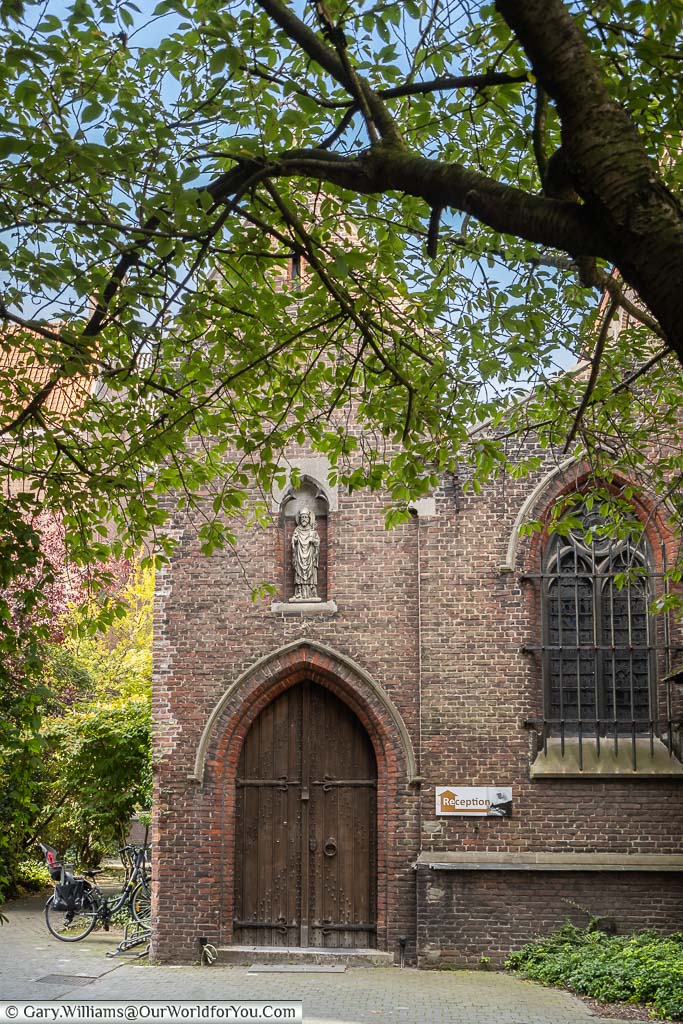
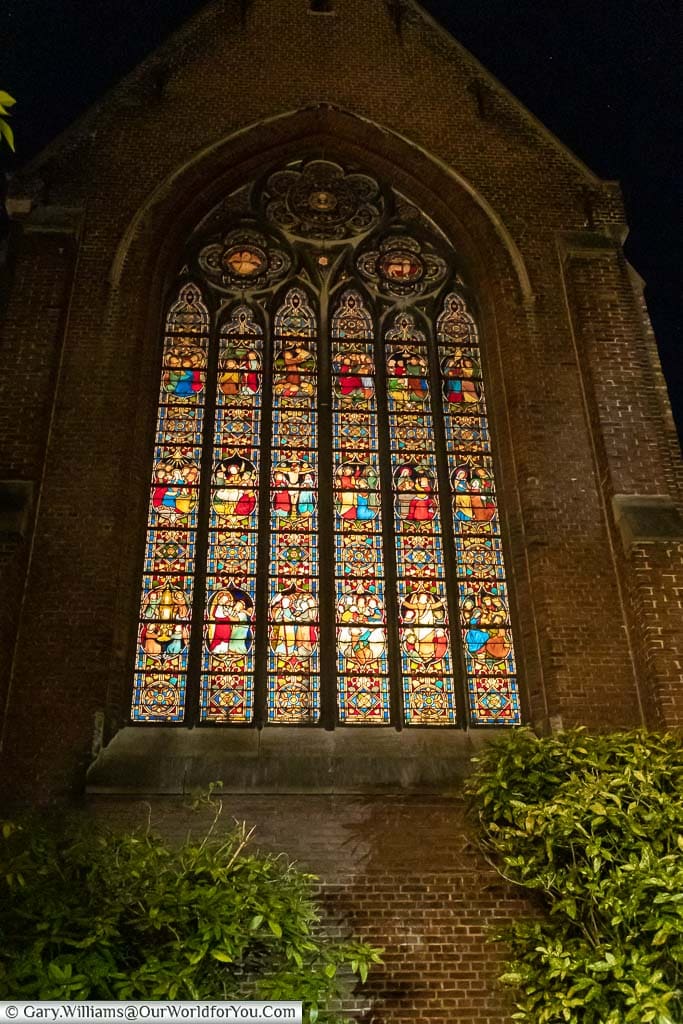
Our room was very comfortable and clean and had a lovely private terrace where we could sit and plan our day ahead. The desk area was a reasonable size, allowing us to set up our charging station and work on the laptop.
Our bathroom includes all your essential toiletries and a walk-in shower. The toilet was in its own individual room, and the unique aspect of this room was a large statue of a mother and child looking down upon us, which was a first for us.
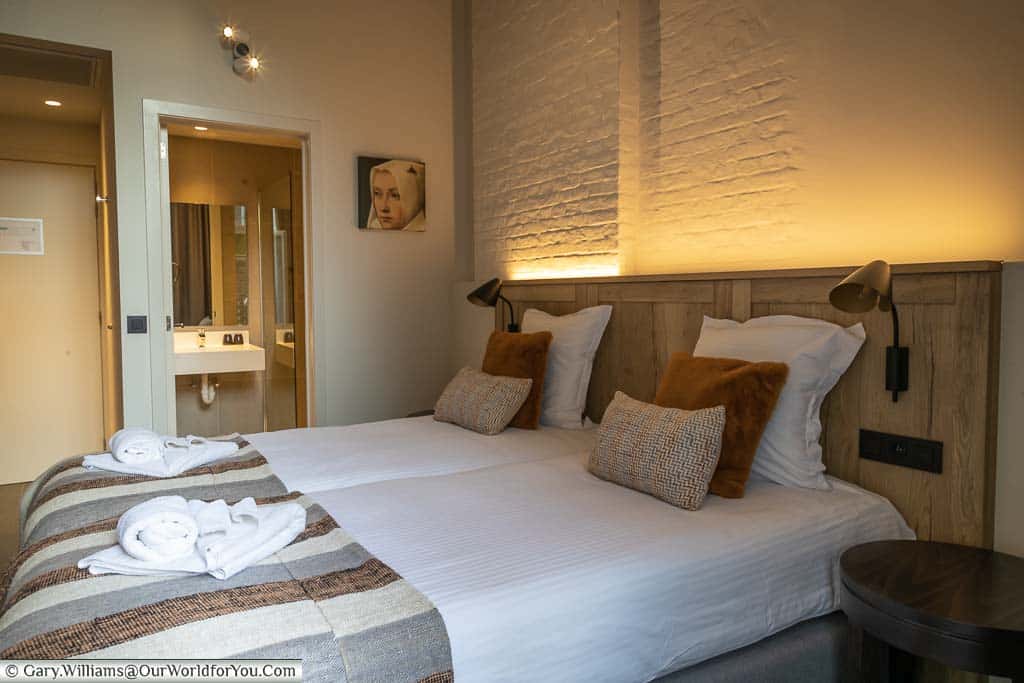
There was a wide variety of food and drinks for breakfast, and all were served in a very light and airy location within the monastery. The food was constantly being replenished, and ample coffee, tea, and fruit juices.
The Wi-Fi speed from our bedroom was 11.5mbps download and 5.0mbps upload.
We visited Ghent as part of a Flanders road trip, so the on-site car park was perfect and was chargeable at €25 per day.
Disclaimer
* This post may contain links to affiliated sites where we earn a small commission at no additional charge to you.
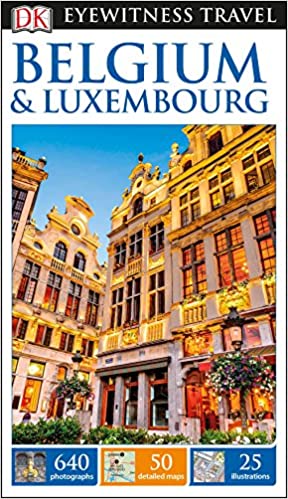

I really enjoyed this post, especially the artist who did pictures of London. Also the restaurants and hotels you stayed in..
Ahh, thanks very much.
Yes, we were pretty surprised to see so many pictures of London and the River Thames. His paintings of the canals in Belgium were incredible too; it was a lovely exhibition.
The high quality of the hotel and restaurants were fantastic, we can highly recommend.
Oh my goodness! So much information in one post! I love a blog post with a nice little history overview, and it sounds like you ate very well on this trip! Thank you for all the information, it will be very useful as I’m hoping to go to Ghent one day soon.
Thanks very much, Fizz; we love discovering the history of a location, so I always like to include some snippets.
Ghent is a beautiful city, and as it is pedestrianised, it’s incredibly easy to stroll around the historic centre. There are so many places to explore, and I’m sure you’ll discover even more.
Yes, the restaurants were fantastic.